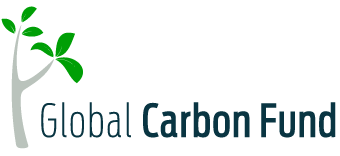Australia Sets Record in Clean Energy Investment and Battery Storage in Q1 2025
Australia’s clean energy sector hit a significant milestone in Q1 2025. It saw a surge in investments and rapid growth in Battery Energy Storage Systems (BESS). With AUD 3.6 billion in funding—a 56% increase from last year—this growth shows progress toward a stronger, renewable energy grid.
Why Clean Energy Investments Are Rising in Australia
Investor interest in clean energy is booming. The Clean Energy Council’s Q1 2025 report revealed that six major BESS projects secured funding, totaling AUD 2.4 billion and adding 1,510 MW (1.5 GW) of new storage capacity. This reflects rising confidence from both the public and private sectors.
BESS stood out with an 85% increase in investment year-over-year. These systems store solar and wind power, releasing it when demand peaks. This growth raised BESS output in the National Electricity Market by 86%, according to the Australian Energy Market Operator (AEMO).

How Battery Energy Storage Supports Renewable Power
Battery storage is now key to Australia’s clean energy transition. It stabilizes supply by storing extra renewable energy and delivering it on demand, even when solar or wind output drops. This helps prevent blackouts and ensures steady green energy flow.
BESS installations are expected to double by 2027. The federal government has pledged over AUD 200 million in the 2025 budget to expand energy storage, which will support emissions cuts and 2030 climate targets.
- Large-scale battery investments continued to rise in 2024. By year-end, 38 utility-scale BESS projects were under construction—up from 27 in 2023 and 19 in 2022.
- These projects will add 8.7 GW / 23.3 GWh of capacity, a significant increase from 5 GW / 12 GWh in 2023 and 1.4 GW / 2 GWh in 2022.
The Waratah Super Battery in New South Wales is the largest under development at 850 MW / 1,680 MWh. It’s nearly ready for commissioning and will enhance grid transfers from renewable zones. Next is the 600 MW / 1.6 GWh Melbourne Renewable Energy Hub, expected to go online in 2025.

Federal Budget 2025: Key Driver for Renewable Energy Growth
The 2025 federal budget is a major boost for clean energy expansion. It increases funding for initiatives aligned with Australia’s net-zero goals. This financial support aims to lower emissions, create jobs, and encourage innovation in renewables.
This backing gives private investors more confidence. Developers now have a stable policy environment to test and expand clean technologies. Both government and industry are united in transforming Australia’s power system.
Surge in Home Battery Installations Across Australian Households
Residential battery adoption is growing fast. New SunWiz data shows 185,798 household batteries are now installed in Australia. The second half of 2024 alone saw 45,233 units sold—up 55% from the same period in 2023.
Total 2024 sales reached 74,582 units, a sharp rise from around 46,000 in 2023. About 4.6% of Australia’s 4 million solar installations now include a battery. Moreover, 23% of new solar systems in 2024 came with a battery, up from just 7% the previous year.
This trend reflects a growing belief in the benefits of pairing solar with storage—lower energy bills and better energy independence. Various state programs support household batteries.
NSW introduced subsidies in late 2024, while Queensland’s Battery Booster program ended in May. Rebates and loans are also available in Victoria, the Northern Territory, and through the Clean Energy Finance Corporation’s Household Energy Upgrades Fund. A broader national support program could further boost adoption.
How BESS Projects Help Cut Emissions in Australia
Renewables like wind and solar help reduce Australia’s carbon footprint by displacing fossil fuels. When battery systems store and release clean energy, the grid relies less on coal or gas during peak demand.
For example, the Bonshaw Solar PV Park is set to avoid 600,000 tonnes of CO2 annually. More projects like this will help Australia meet its international climate commitments. Battery storage improves grid flexibility while ensuring emissions continue to decline.
Australia’s greenhouse gas emissions for the year to June 2024 were 440.6 million tonnes of carbon dioxide equivalent (Mt CO2-e). It was a 0.7% decrease from the previous year. So as of 2024, Australia’s emissions are 28% below 2005 levels.

- The country aims for a 43% reduction in emissions from 2005 levels by 2030 and to achieve net-zero emissions by 2050.
Renewable Energy Market Sees Rapid Expansion
Australia’s renewable energy sector is expanding rapidly. In 2024, large-scale clean energy projects secured AUD 9 billion in financial commitments—up from AUD 1.5 billion in 2023.
Forecasts suggest renewables could meet at least 65% of the nation’s power needs by 2030. Factors driving this shift include falling technology costs, demand for flexible energy solutions, and supportive legislation like the Future Made in Australia Act.
Right now, 82 renewable energy projects are being built or confirmed. They will add 12,544 MW of capacity. This means more clean power for homes, schools, and businesses nationwide.
Challenges to Grid Stability and BESS Scalability
Despite this momentum, challenges remain. Grid reliability must keep up with rapid renewable growth. Battery storage will be vital for managing the variability in solar and wind output.
To scale BESS affordably, technical advancements are needed. To upgrade the grid, we need to improve infrastructure, speed up permits, and train skilled workers. The energy transition will require addressing these challenges while focusing on decarbonization goals.
With policy support and investor confidence, Australia is set to lead the global clean energy transition. Ongoing investment in battery energy storage, new ideas, and strong collaboration between the public and private sectors can create lasting change.
- ALSO READ: Woodside Almost Double Carbon Credit Use: Can Offsets Deliver Net Zero for Australia’s Energy Giant?
The post Australia Sets Record in Clean Energy Investment and Battery Storage in Q1 2025 appeared first on Carbon Credits.
































